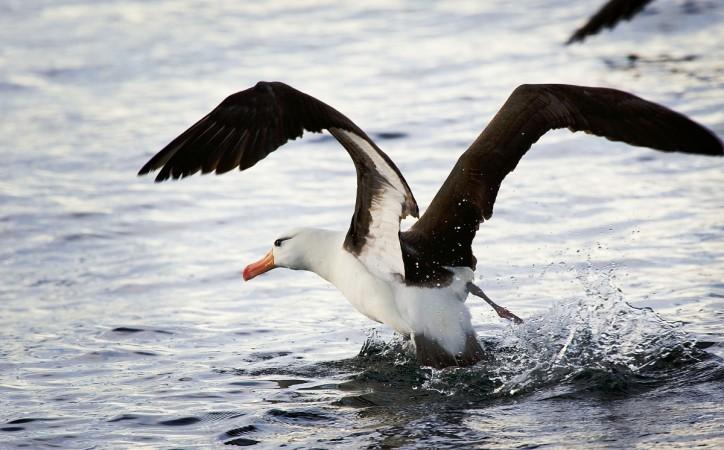
Rising sea levels have already threatened our home planet quite a lot. Earlier we had reported that the West Antarctic Ice Sheet is melting faster than imagined and it would cause the sea level to rise around 25 percent, which would be worrisome for the United States coastline. Now, it appears that rising sea levels not only threatens the existence of the humans but also that of the birds – albatrosses, to be precise.
Ecologists from Woods Hole Oceanographic Institution in the United States and the French National Center for Scientific Research (CNRS) have jointly conducted a study on a population of black-browed albatrosses at Kerguelen Island. This island is a part of the French Southern and Antarctic Lands, where starting from 1979, 200 breeding pairs have been monitored every year. The study was published in the Journal of Animal Ecology.
Change in the climate affects this particular species of bird in complicated ways. The researchers created a matrix population model during the study. This model notes all the combined effects that are caused by climate changes and functional traits for comprehending the complete life cycle and how the population growth might have been affected due to climate change. Functional traits include size, breeding time and also foraging behaviour. All these things influence the demographic traits, like survival and reproduction.
Black-browed albatrosses usually breed on the said sub-Antarctic islands at the time of the austral summer. They lay a single egg in October, which then hatches in December. The chicks grow up to be the size of an adult during late March.
The researchers associated with this study discovered that the temperature change at the sea surface during late winter leads to the most significant variations in the population growth rate. It impacts the survival of the juvenile albatrosses during their first year at the sea. The study also noted that the impacts of climatic changes or other conditions actually take place indirectly on the seabirds.
"Sea surface temperature is widely used as an indicator of food availability for marine predators because warmer temperatures usually result in lower primary productivity in marine ecosystems, ultimately reducing the availability of prey", opined a seabird ecologist from the Woods Hole Oceanographic Institution, Dr Stéphanie Jenouvrier.
"As our oceans are projected to warm, fewer juvenile albatrosses will manage to survive and populations are expected to decline at a faster rate," Dr Jenouvrier added.
Among other things, according to the ecologists, foraging behaviour at the time of the pre-breeding period also majorly impacted the population growth rate.
The study concludes that the changes in the structure and population size of these birds have been caused by climate changes, which have taken place over various seasons, multiple functional traits and also demographic processes throughout the entire lifecycle of black-browed albatross.
"Albatrosses and other seabirds are long-lived predators that fly very long distances to forage at sea and nest on land. As a key indicator of ecosystem health, studying how seabirds fare in the face of climate change can help us predict the ecological impacts on the entire marine food web", stated Dr Christophe Barbraud of CNRS, co-author of the study.















